Ask fellow riders for advice on what you should buy for your first motorcycle, and you are sure to get a wide range of advice. Some will smartly suggest that you start with a lightweight bike that you feel comfortable on, that is easy to maneuver and is more forgiving to help you learn to ride safe. But I’ve heard other recommendations that are questionable if not downright dangerous.
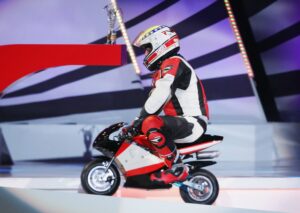
Don’t start too small, because you’ll outgrow it and end up selling it right away.
At first glance, this sounds reasonable. You might be looking at 250cc to 300cc bikes and thinking, “Is that really enough power? Will it even keep up on the highway?” And who wants to go through the hassle of selling a bike you just bought a year ago? Plus, maybe you’ve already got your “dream bike” picked out. I get it – we all want to ride the bike of our dreams.
But here’s the thing: smaller bikes make the learning process easier and safer. They are lighter, easier to balance, and overall more forgiving of the mistakes new riders tend to make. Compared to larger and heavier bikes, smaller bikes help the new rider build confidence faster as they learn to maintain balance, explore lean angles and work on smooth control. If you are intimidated by the size or power of your machine, that is going to let fear and nervousness hinder your learning.
And yes, wanting to move on to a bigger bike is likely to happen. That is a good thing! But don’t be in too much of a hurry to get that Suzuki GSXR 1000 just because you are comfortable riding your Honda Grom to the coffee shop and back. Put some miles in, in a variety of riding conditions. Work your way up to riding on faster highways, riding twisty back roads, riding in traffic, etc. Take intermediate and advanced training classes on your little “beginner bike” to really explore and learn it’s limits as well as your own. If you put the effort into improving your skills on the smaller bike, you’ll already be a much more confident rider when it’s time to upgrade.
Plus, smaller bikes retain their value pretty well, so when the time comes to sell, you’ll likely get back most of what you paid, if not more.
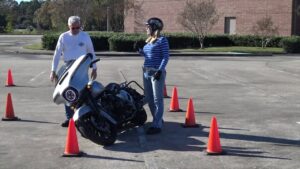
I started on a big Harley or a sport bike and I learned to ride just fine.
You’ve probably heard this one too. People love to tell the story about how their first bike was a massive Harley or a 150-horsepower sportbike, and they managed just fine. And while I don’t doubt that some folks learned on bigger bikes and avoided tragedy, this is not an approach I’d recommend.
There are those who naturally have a great sense of balance and fine motor skills needed to control a motorcycle that seem to be able to pick it up effortlessly. But not everyone is like that.
The largest bikes I’ve taught new riders with are the now discontinued Harley Davidson Street 500s. The smallest bikes I’ve taught with are Honda Groms and 125cc Kawasaki cruisers. I’ve seen brand new riders ride the relatively big Harleys with ease and I’ve seen brand new riders struggle to maintain control of the 9 horsepower Honda Grom. And I’ve also seen everything in between.
The bottom line is different people develop the skills needed to ride a motorcycle at different rates and starting small gives you the best chance for success. Sure, some folks can start on bigger bikes and eventually learn, but I’d bet they’d have learned faster if they’d started smaller.
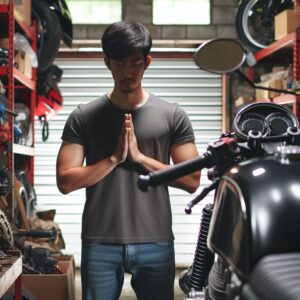
You just need to “respect the bike”.
Respect the bike. Does this mean to address it as Sir or Ma’am, say please and thank you, etc?
This bit of advice comes worded in different ways: respect the bike, just take it easy, be mindful of the throttle. The underlying premise is that the bike will only go as fast as you tell it to, and since you are in control of the throttle, you can start out on a powerhouse of a bike as long as you “respect it”.
Seems to make sense, but the issue with this advice is that a new rider has not yet developed the fine clutch and throttle control needed for this. Have you ever tried to teach someone how to drive a car for the first time? You get out into a big empty parking lot and get into the passenger seat. The new driver presses down on the gas pedal, and inevitably they pressed down too much, are taken off guard by how quickly the car takes off, so they get off the gas and press the brake pedal, again a bit too abruptly, bringing the car to jerky halt as your head is flying off the head rest and towards the windshield. Now fortunately this didn’t happen in a 500 horsepower supercar and after some practice they start to develop a feel for just how much gas and brake they need to use to smoothly control the car.
Now imagine this same scenario on a motorcycle. The new rider is on the bike. They have never done this before and they have no idea how little wrist movement it takes to get this bike moving down the road or across the parking lot. The motor skills needed to control the clutch and throttle need to be developed through practice. And that 15 horsepower “beginner bike” is going to be much more forgiving of mistakes as they learn this compared to other bikes that have power to weight rations that rival 6 figure supercars.
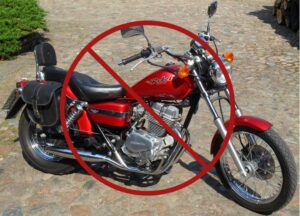
Get a Honda Rebel
Wait, this isn’t bad advice? The original Honda Rebel 250, weighing a little over 300lbs, with 16 horsepower and low seat height has been a staple in the beginner bike category for many years. It is used as a training bike in many beginner riding classes and is a solid choice for someone just learning to ride.
So why has it made my list for “bad advice”? Well it’s not bad advice, but I feel it’s often thrown out there as the default answer without understanding the type of bike the new rider may be interested in.
The Rebel is a great choice if you’re into cruisers and want that laid-back riding experience, but what if you’re more drawn to something sportier, something with quicker handling? A bike like the Rebel might not be the best fit.
If your dream is to carve through twisty roads or hit the track, look for smaller sportbikes or naked bikes like the Yamaha R3 or MT03 and Kawasaki Ninja 400. These bikes are still manageable for beginners but offer a more engaging and sportier riding experience.
Maybe you’re thinking about adventure riding, tackling dirt roads and mixed terrain. If so, a small dual-sport bike like the Honda CRF300L, Yamaha XT250 or similar would be a better fit.
Your first bike is likely not going to be your dream bike, but it should at least be something you enjoy riding. Otherwise, you will not want to put in the time and effort to build your skills and confidence. You may be dreaming of riding a Back Country Discovery Route with your adventure bike buddies, but the Honda Rebel or small V-Star cruiser you got doesn’t quite fit the bill for that.
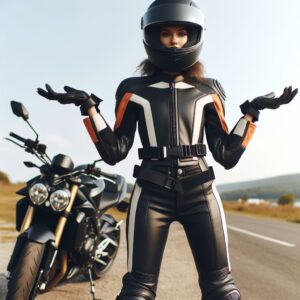
So what should you look for?
Ultimately, the best bike to start on is one that suits the riding style you are looking for while being easy to manage while you learn. Whether you’re aiming for twisty roads, off-roading, or a relaxed cruise, start with something that fits your style, just start with a smaller model of what you are looking for.
The most important thing is to focus on building your skills and confidence. Practice, ride, and keep learning. If you put in the time and effort, you’ll have plenty of options when it’s time to upgrade, and you’ll do so with much more confidence. And then you can sell your bike to someone else who is looking to learn.
